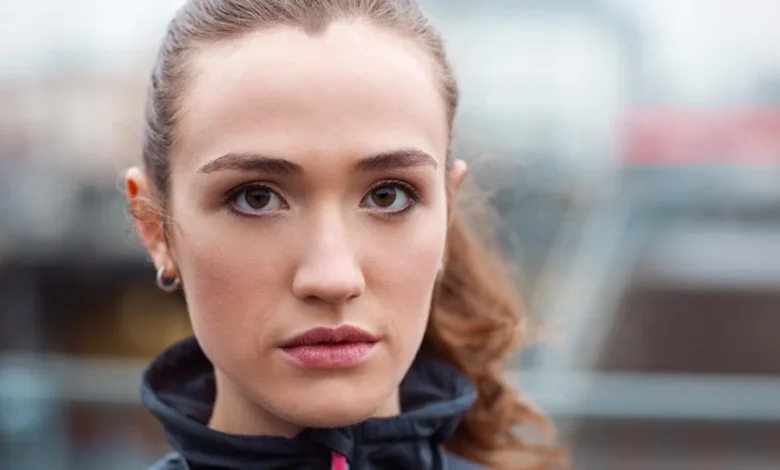Business
Widow’s Peak Genetics

Widow’s peak genetics is a fascinating area of study that explores the hereditary factors influencing the appearance of a widow’s peak, a distinctive V-shaped hairline pattern on the forehead. This genetic trait has been observed in various populations across different cultures and historical periods.
Understanding the underlying genetic mechanisms behind the inheritance of widow’s peak not only provides valuable insights into human genetics but also sheds light on our understanding of evolutionary biology and population diversity.
The presence or absence of a widow’s peak is determined by both genetic and environmental factors. Genetic research has shown that this trait follows an autosomal dominant pattern of inheritance, meaning that if one parent carries the gene for a widow’s peak, there is a 50% chance it will be passed down to their offspring.
However, it is important to note that while genetics play a significant role in determining the presence of a widow’s peak, environmental influences such as hormonal changes during puberty can also affect its expression. Therefore, studying widow’s peak genetics not only helps us understand inheritance patterns but also highlights the complex interplay between genes and environmental factors in shaping our physical characteristics.
By considering these multiple factors in tandem, we gain a more comprehensive understanding of how widow’s peaks are formed. It is essential to approach this topic with objectivity and precision in order to provide accurate information for individuals seeking knowledge about their physical traits.
Definition and Appearance of a Widow’s Peak
The widow’s peak is a distinct V-shaped point formed by the hairline at the center of the forehead, creating an intriguing and unique facial feature. This genetic trait is characterized by a downward projection of scalp hair in the middle of the forehead, resembling the shape of an inverted ‘V.’ While it is commonly associated with men, women can also possess this prominent feature. The appearance of a widow’s peak varies from individual to individual, with some having a subtle and gentle point, while others have a more pronounced and dramatic peak. This distinctive characteristic has inspired various hairstyles that complement its shape, such as side-swept bangs or layered cuts that frame the face elegantly. Many celebrities have embraced their widow’s peaks and made them synonymous with their image. Notable examples include Leonardo DiCaprio, Kourtney Kardashian, and Audrey Hepburn, who have showcased different hairstyles that accentuate their widow’s peaks gracefully. Overall, this unique genetic trait not only adds intrigue to one’s appearance but also offers numerous styling options for those looking to embrace their widow’s peak with confidence.Genetic Factors Influencing Widow’s Peak Inheritance
One factor influencing the inheritance of a distinctive hairline pattern is determined by specific genetic variations. These genetic variations, known as influencing genes, play a crucial role in determining whether an individual will have a widow’s peak or not. Researchers have identified several genes that are associated with the development of this particular hairline pattern. For example, one study found that variations in the EDAR gene were significantly associated with the presence of a widow’s peak. Additionally, other genes such as BMP4 and FOXC1 have also been implicated in the inheritance of this trait. These genetic variations can interact with each other and with environmental factors to influence the expression of widow’s peak in individuals. Understanding these genetic factors can provide valuable insights into the complex mechanisms underlying hairline patterns and may contribute to further research on human genetics and development.Patterns of Inheritance for Widow’s Peak
Patterns of inheritance for the distinctive hairline pattern known as a widow’s peak can be influenced by specific genetic variations. Genetic inheritance plays a significant role in determining whether an individual will have a widow’s peak or not. Studies have shown that this trait is inherited in an autosomal dominant manner, meaning that only one copy of the gene is needed to express the characteristic. However, it is important to note that not all individuals with the gene will necessarily exhibit a widow’s peak, as other factors such as environmental influences can also play a role. In addition, there are various genetic variations that can affect the expression of this trait, leading to different patterns of inheritance within families. For example, some studies suggest that multiple genes may be involved in determining the presence or absence of a widow’s peak, while others propose that certain alleles within a single gene may influence its expression. Further research is needed to fully understand the complex genetic mechanisms underlying widow’s peak inheritance and how different genetic variations contribute to its manifestation.Other Factors Influencing Widow’s Peak
Hormonal influences and environmental factors are two key aspects that can affect the presence of widow’s peak. Hormonal influences play a significant role in the development of physical traits, including hair patterns like widow’s peak. Research suggests that certain hormones, such as testosterone, may contribute to the formation or suppression of widow’s peak. Additionally, external environmental factors such as exposure to pollutants or stressors may also influence the expression of widow’s peak by interacting with genetic factors.Hormonal Influences
Contrary to popular belief, the presence of a widow’s peak is not solely determined by hormonal influences, as genetics and environmental factors also play a significant role. While hormonal changes during puberty can affect hair growth patterns, it is important to note that the formation of a widow’s peak is primarily determined by genetic factors. A person inherits their hairline shape from their parents through the combination of various genes. Additionally, environmental factors such as nutritional status and exposure to certain chemicals or toxins may influence hair growth patterns. To better understand the complexity of widow’s peak inheritance, a table summarizing the interactions between genetics, hormones, and environmental factors can be helpful:| Factors | Influence on Widow’s Peak |
|---|---|
| Genetics | Primary determinant |
| Hormonal Changes | May affect hair growth patterns during puberty |
| Environmental Factors | Can have an impact on hairline shape |


![[silent war] taming a tsundere](https://newsipedia.com/wp-content/uploads/2024/04/download-20-1.jpeg)

